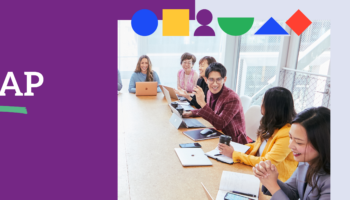Collective progress towards the workplace utopia of true inclusion has been staggered at best. However, our progression through varying buzzwords appears to have moved faster than our advancement towards a more inclusive landscape. Why? Because, like many other complex challenges, the closer you look, the more complicated it becomes.
One such intricacy is: how do we strike the balance between equity and equality? And in doing this, is the common practice of isolated committees and siloed sub-groups (for those in of varying abilities, racial backgrounds, gender, and our LGTBQI+ communities) best practice?
The obvious struggle faced in this area is that there is a large need to create community, a shared experience, empowerment and a support network specifically for previously marginalised groups. However, this alone won’t lay the path to true inclusion.
To establish true inclusion, we need to both right past wrongs of inequality and empower all members of the wider community to embrace one another and practice curiosity, empathy and, most importantly, inclusion.
So, let’s unpack the key reasons that our inclusive initiatives need to be more inclusive.
1. Empathy is the root of all progress
Through so much of the work we do at The Dream Collective we see that the success of diversity & inclusion initiatives is rooted in the pillars of emotional intelligence, most specifically the ability to empathise. For that reason, we need to ensure that our strategies not only educate on empathy and inclusion but provides spaces for dialogues that allow people to practice these skills and put them into action. Without this, they can easily remain a theoretical concept that rarely sees the practical light of day.
2. Diversity of Thought is the Key to Innovation
The inextricable link between inclusion and innovation is unquestionable. So, why do we reserve that realisation for the ‘destination’ of this process, rather than integrate it into the ‘journey’? We need to bring a design thinking mentality to our approaches and be willing to be agile, iterate and recognise when efforts are proving ineffective. Diversity of thought is paramount to this process.
3. Rapid Progress Sometimes Requires a Bumpy Ride
In taking an approach where we invite others to the table, we are inevitably bringing more variables and risk for error. However, there are few circumstances where the speed of progress doesn’t bear the cost of a bit of ‘failing fast’ along the way. To take from a good start-up mentality, if you want to grow quickly, you need to ‘move fast and break things’ and maybe this is more of the mindset that we need to bring to these initiatives to push, integrate, iterate and progress, rather than allowing the series of the buzzwords to overtake our progression to a better landscape of equality.
The takeaway from all this?
Let’s fight our hearts out for progress and create space for shared experience and community as part of the process. But, let’s ensure that this is part of a wider strategy that also brings accountability to all members of the community to challenge existing behaviours while being given room to be curious, learn and even make (well-intentioned) mistakes as part of this process.
Written by Taylor Hawkins, Head Of Growth & Innovation, The Dream Collective
_____________________________________________________
You can hear Taylor speak at General Assembly Melbourne event “What Diversity & Inclusion Means In The Workplace” this September 11th, where she will provide tools to advocate for real, sustainable change & also expand on the intersection between innovation and D&I from The Dream Collective’s global perspective.
Register your free seat via the link here. Limited places remaining.







